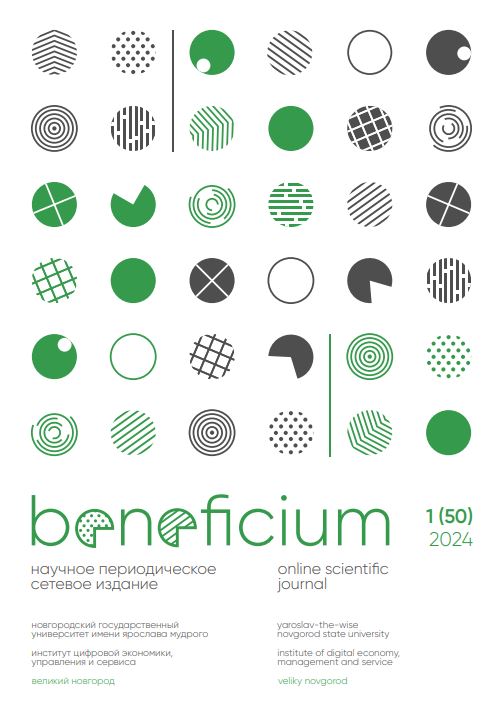ANALYSIS OF CHINA’S VEHICLE PURCHASE TAX POLICY RESEARCH METHODS: DID MODEL
Аннотация
As the most common means of transportation in China, automobiles have brought considerable challenges to China's infrastructure due to the year-by-year increase in automobile exports in recent years. Therefore, China's policies towards the automotive industry have been different at different times, requiring the use of fiscal policies to guide and support the development of the automotive industry. Vehicle purchase tax (VPT), as an important tax in the automobile sales environment, plays a key role in the development of the automobile industry. This paper uses a difference-in-difference (DID) model to assess the implementation effect of China's third VPT incentives, taking the total monthly sales of vehicles enjoying China's VPT incentives as an explanatory variable, dividing them into a control group and an experimental group according to whether or not they enjoy the incentives, and adding the two influencing factors of the industrial value-added and the CPI as control variables. The results of the study show that China's third VPT incentive policy has had the desired effect, and that passenger automobile sales have continued to grow, boosting automobile consumption and, in turn, China's economic growth.
Keywords: automobile sales volume, COVID-19, DID model, Vehicle purchase tax
References
Guangzi L., Wanke L., Xiaoliang C. Research on China’s vehicle purchase tax preferential policies // Modern Commerce and Industry.2022. Vol. 43(21). Pp. 149-151. DOI: 10.19311/j.cnki.1672-3198.2022.21.062
Interim Regulations of the People's Republic of China on Vehicle Purchase Tax. Gazette of the State Council of the People's Republic of China. 2001. Vol. 01. Pp. 12-14. DOI: CNKI:SUN:GWYB.0.2001-01-004
Wu Di. A brief analysis of my country's vehicle purchase tax system // Journal of Chizhou University. 2010. Vol. 24(4). Pp. 18-21. DOI: 10.13420/j.cnki.jczu.2010.04.045
Deng Baoyi. Thoughts caused by the cancellation of vehicle purchase tax preferential treatment // Journal of Hubei Industrial Vocational and Technical College. 2011. Vol. 24(1). Pp. 41-43. DOI: CNKI:SUN:SYZJ.0.2011-01-013
Ahman M. Government policy and the development of electric vehicles in Japan // Energy Policy. 2006. Vol. 34(4). Pp. 433-443. DOI: 10.1016/j.enpol.2004.06.011
Boyle M.A., Matheson V.A. Measuring tax incidence: a natural experiment in the hybrid vehicle market // Environmental Economics and Policy Studies. 2009. Vol. 10(2-4). Pp. 101-107. DOI: 10.1007/BF03353981
Chandra A, Gulati S, Kandlikar M. Green drivers or free riders? An analysis of tax rebates for hybrid vehicles // Journal of Environmental Economics & Management. 2010. Vol. 60(2). Pp. 78-93. DOI: 10.1016/j.jeem.2010.04.003
Empirical analysis of the effect of structural tax reduction policies—taking vehicle purchase tax as an example (2011). Baidu. URL: https://xueshu.baidu.com/usercenter/paper/show?paperid=215b9c5a2e7cbfd59d7519e15037cb21&site=xueshu_se.hmtl (accessed on 01.12.2023).
Fang Y. Introduction and application of difference-in-difference model // China Health Statistics. 2013. Vol. 30(1). Pp. 131-134. DOI: CNKI:SUN:ZGWT.0.2013-01-049
Chen S., Feng Y., Lin C., [et al.]. Research on the Technology Innovation Efficiency of China’s Listed New Energy Vehicle Enterprises // Mathematical Problems in Engineering. 2021. Pp. 1-9. DOI: 10.1155/2021/6613602
Zhao M., Sun T., Feng Q. Capital allocation efficiency, technological innovation and vehicle carbon emissions: Evidence from a panel threshold model of Chinese new energy vehicles enterprises // Science of the total environment. 2021. Vol. 784. Pp. 1-11. DOI: 10.1016/J.SCITOTENV.2021.147104
Ambarish C., Sumeet G., Milind K. Green drivers or free riders? An analysis of tax rebates for hybrid vehicles // Journal of environmental economics and management. 2010. Vol. 60(2). Pp. 78-93. DOI: 10.1016/j.jeem.2010.04.003.
Xinwei G., Chunyan Z. Analysis of the impact of vehicle purchase tax incentives on the innovation performance of new energy vehicle companies // Journal of China University of Petroleum (Social Science Edition). 2021. Vol. 37(1). Pp. 11-19. DOI: 10.13216/j.cnki.upcjess.2021.01.0002
Ran A., Yajuan J. Green reform and enlightenment of Israel’s car purchase tax // International Taxation. 2018. Vol. 6. Pp. 64-67. DOI: 10.19376/j.cnki.cn10-1142/f.2018.06.012
Li M. Comparative Analysis of Equity Financing Efficiency between Chinese and American New Energy Vehicle Listed Enterprises // E3S Web of Conferences. 2021. Vol. 245(1). Pp. 1-9. DOI: 10.1051/E3SCONF/202124501063
About the Authors
Lili Liu – Senior lecturer, Ural Federal University named after the first President of Russia B.N. Yeltsin, Yekaterinburg, Russia. E-mail: liulili@mail.ru. SPINРИНЦ 4050-5823. ORCID 0000-0001-8791-665X
Igor A. Mayburov – Dr. Sci. (Economics), Professor; Head of the Department, Ural Federal University named after the first President of Russia B.N. Yeltsin, Yekaterinburg, Russia. E-mail: i.a.mayburov@urfu.ru. SPINРИНЦ 3904-2810. ORCID 0000-0001-8791-665X. ResearcherID AAQ-4302-2020. Scopus Author ID 56584757200
For citation: Liu L., Mayburov I.A. Analysis of China’s Vehicle Purchase Tax Policy Research Methods: DID Model // Beneficium. 2024. Vol. 1(50). Pp. 84-89. DOI: 10.34680/BENEFICIUM.2024.1(50).84-89









